Thai Food – We Don’t Need No Stinking Chop Sticks
I am going to start by dispelling the myth – Thai people don’t use chop sticks. They have realized that better tools exist for getting food from your plate to your mouth than two splintery sticks. So the next time a Thai restaurant tries to be gimmicky and gives you chop sticks instead of silverware, tell them no thanks. You’ll go native and eat like the Thai people do – with a spoon and fork. And while you are at it, order like they do, too – family style. Food is served in the middle of the table to be shared. You use your own personal oversized spoon to spoon portions to your plate – rice, soup, curry, noodles, whatever. The backside of the spoon is then to be used to push the food onto your fork; it is never to go in your mouth.
While I am dispelling myths, I have a few more to knock down. Pad Thai is not a bastardized American dish like General Tso Chicken. It is in fact a popular staple of the Thai diet eaten many times during the week – sometimes even for breakfast. What we ate there was pretty close to what you find at your favorite local Thai joint.
A third Thai myth is that while the good people of Thailand are some of the top consumers of Johnnie Walker Black in the world, actual Thai whiskey is not whiskey at all. It is dark rum and served with Coke like it should be. Fourth, there is little differentiation between breakfast and the other meals of the day. The one exception is curry dishes are rarely eaten for dinner. Yes, I ate Pad Thai for breakfast and liked it.
I read about all of the above myths in various travel books and sites in preparation for the trip. This fifth myth is all my own and one I will most likely get criticized for – the food was only okay. All I heard before I left for Thailand was how great the food was. “I’m so jealous you’re going. The food will be so great.” Others would agree with heads nodding emphatically like they were the end all expert on Thai food. “Better than anything you will get in the states.” The travel forums raved about it. I actually found it relatively comparable to what I eat back in Charlotte which says a lot about the area Thai chefs.
I make this statement with the aside that we didn’t just eat in tourist place. In fact, we were repelled by most of those places from the sheer size of their menu – Italian, American, German, Swedish, Thai, Chinese, and all on one menu. We tried to get off the beaten path to find where the locals eat. We had our immunizations and were ready for anything. I think many travelers are just over romanticized about being in Thailand. You know the crowd – the passport stamps collectors. The, oh my gosh, nothing is too great about where I have been crowd. I don’t fall into this group of travelers. To me, travel is more about the cultural experience than checking off a list. Perhaps a reason for my last dispelled myth is the Thais water down their cuisine for Westerners for fear of offending our delicate palates. For the most part, the spices were weak even when the food was ordered spicy. The quintessential Thai chili kick was almost always missing.
There were some gems along the way like anything eaten at Poo Maa on Kamala Beach – from the fried prawns with chili to their red curry. Food just tastes better when you are on a secluded beach with your feet in the sand and a beer in your hand. Our second favorite restaurant where we found ourselves on multiple occasions was Lemongrass in Chiang Mai. It was here where I first sampled massaman curry. Next time you are out for Thai food, stray from the beaten path of red, yellow, or green and try the more fragrant massaman. The difference is in the spices – coriander root, cloves, and cinnamon blended with the usual Thai curry suspects of chilies and coconut milk.
We also took a risk and tried the street food. Both of us lived to tell about. My favorite was the grilled bananas in coconut. Hot damn my mouth is watering thinking about it. The char from the open flame sealed in the sweet gooiness of the banana for an explosion of intense caramelized flavor. The banana didn’t even need the coconut milk that accompanied it. We also sampled BBQ pork on a stick with spicy chili Thai BBQ sauce (finally some spice), ground chicken balls (they were, eh), and smoked sausage (meat in a tube is always a treat).
But the best meals were the ones we cooked at the Thai Farm Cooking School. They were straight from the garden fresh. Plus, there is a sense of pride in knowing that you had a hand in the meal. We each learned to cook five dishes. I cooked Yellow Curry, Coconut Soup, Pad Thai, Fried Chicken with Cashew, and Pumpkin in Coconut Milk for dessert. Mrs. Gourmand attempted Green Curry, Chicken with Basil Leaves, Spring Rolls, Tom Yam Soup with Shrimp, and Mango with Sticky Rice for dessert. We left stuffed, happy, and ready to show off our culinary skills for friends and family back home. After several attempts documented in the blog – Thai Cooking Take One, Thai Cooking Take Two, and Thai Cooking Here We Go Again – we decided that some meals are best left to the pros.

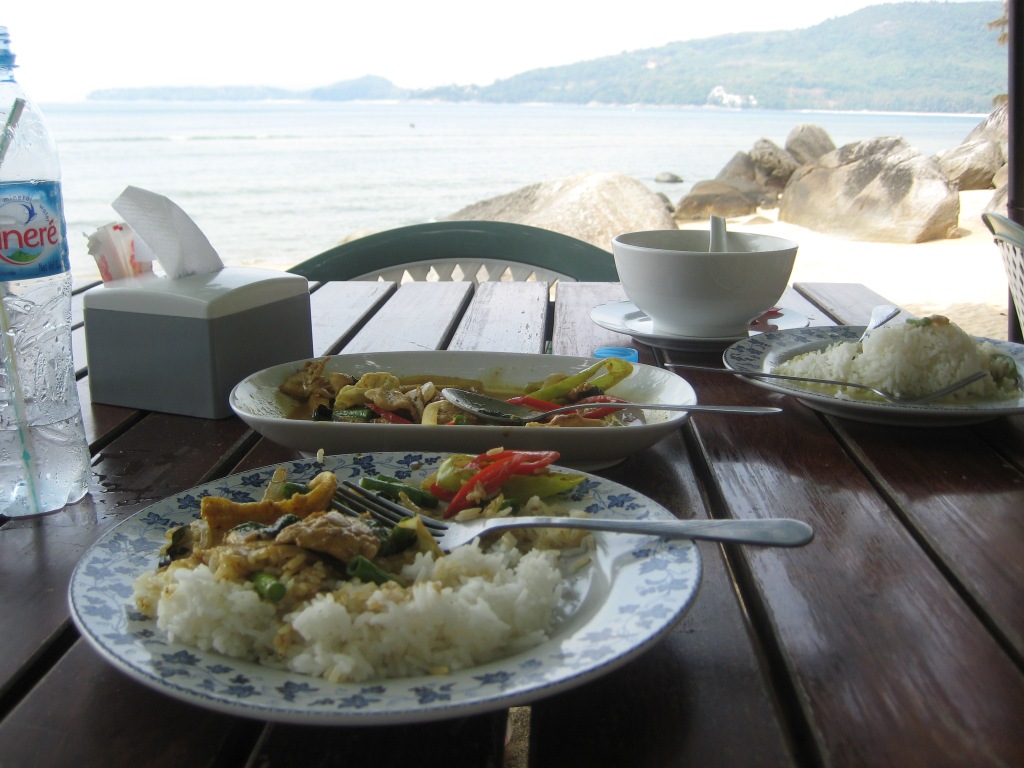
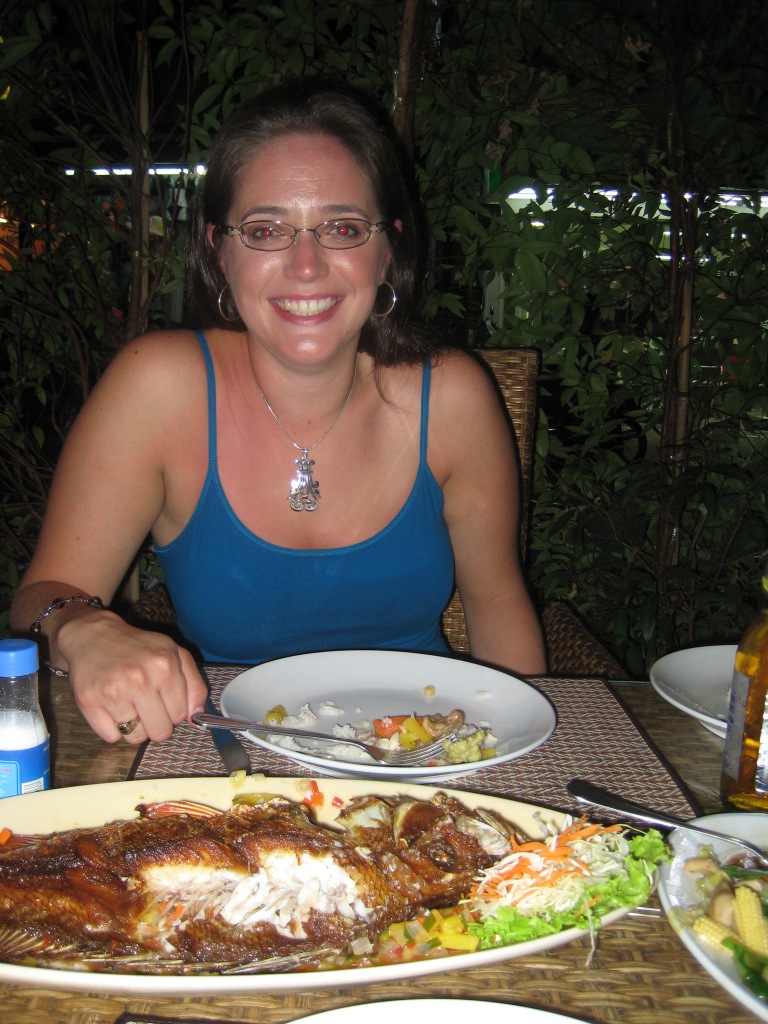
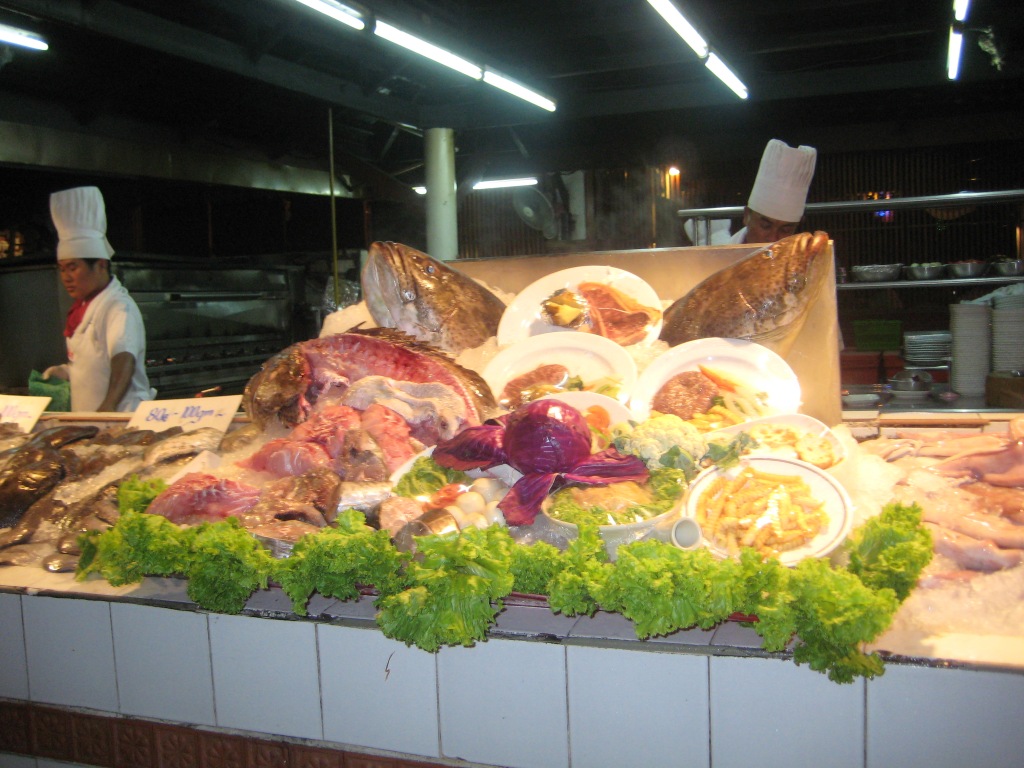
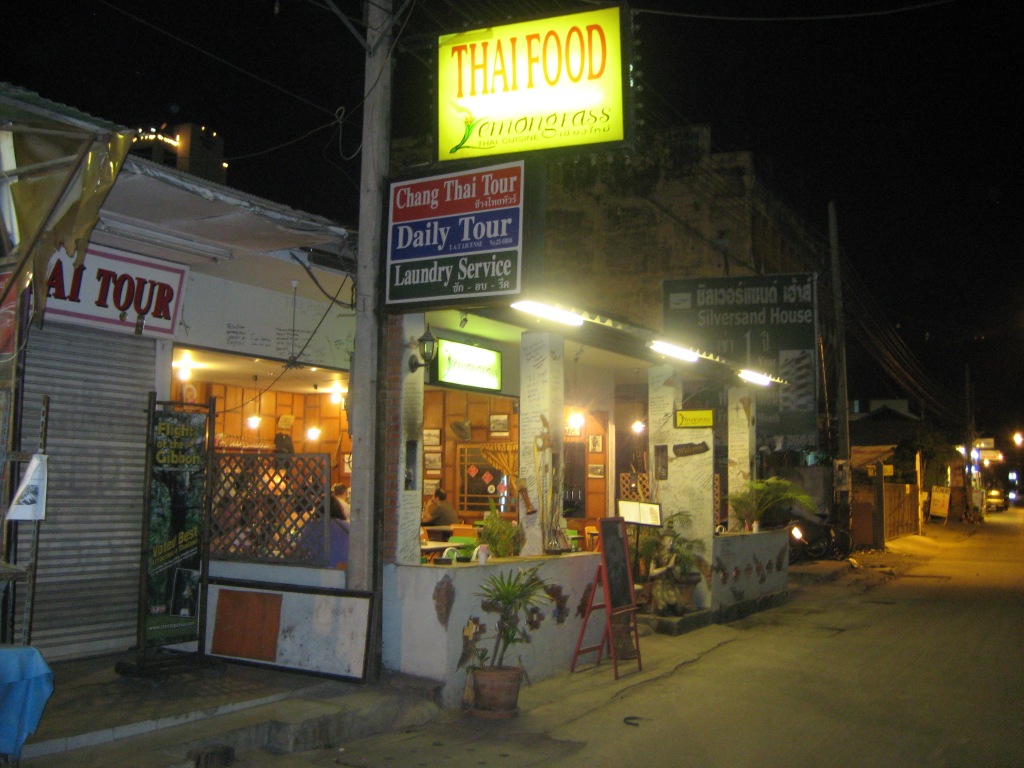
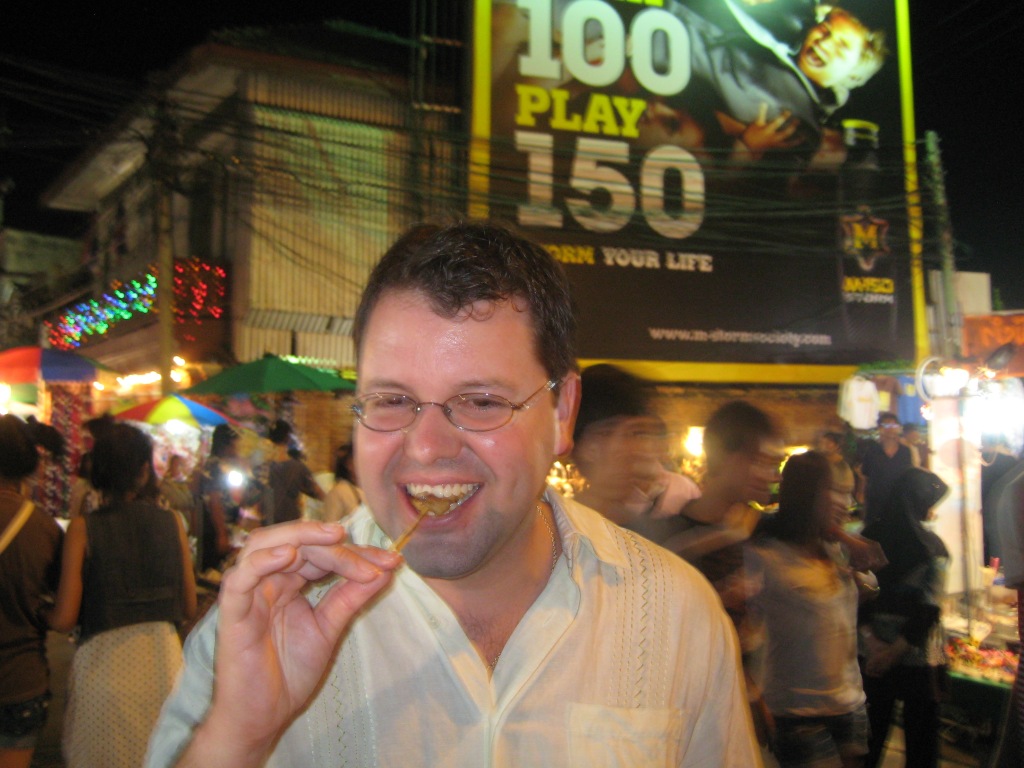
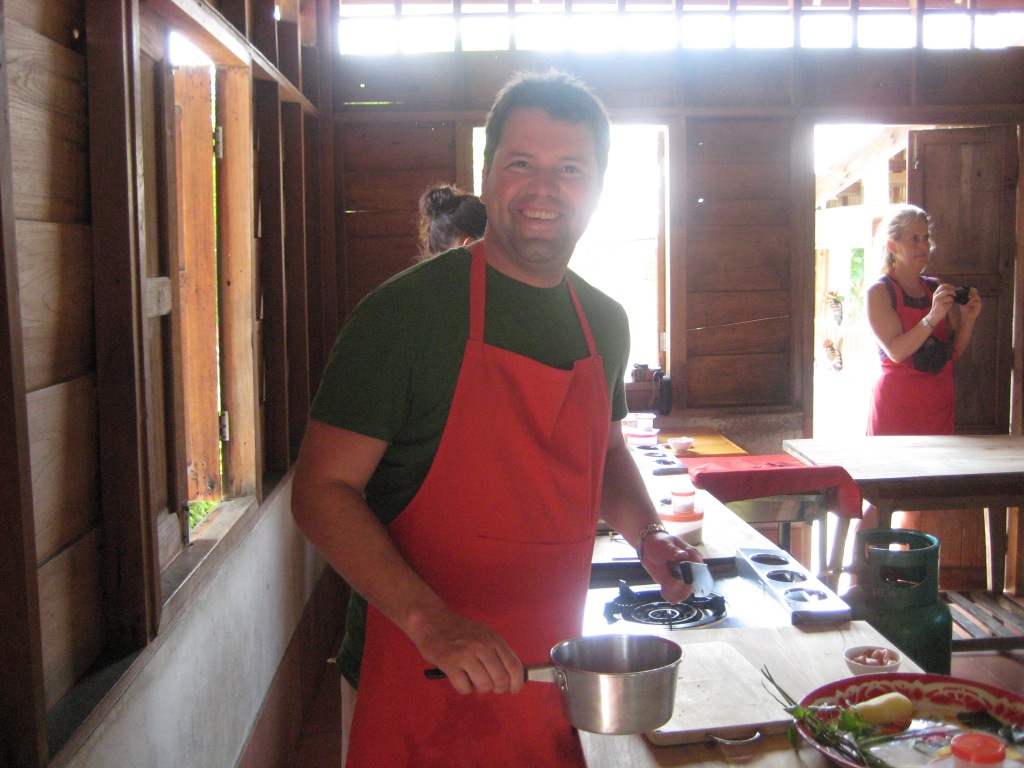
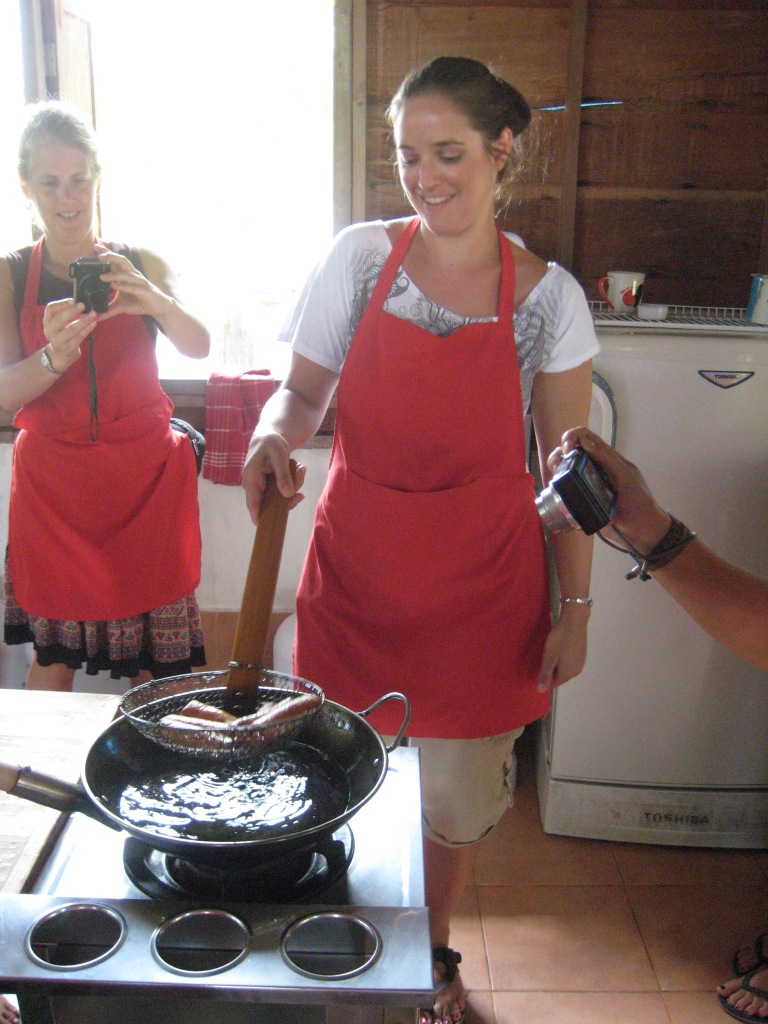
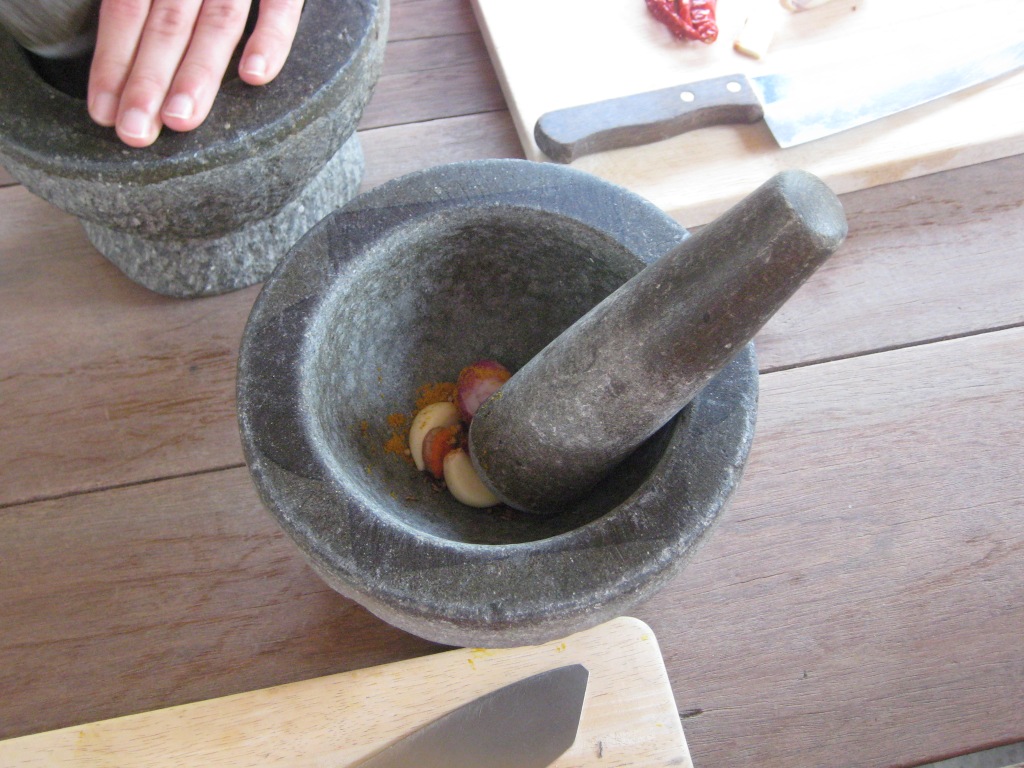
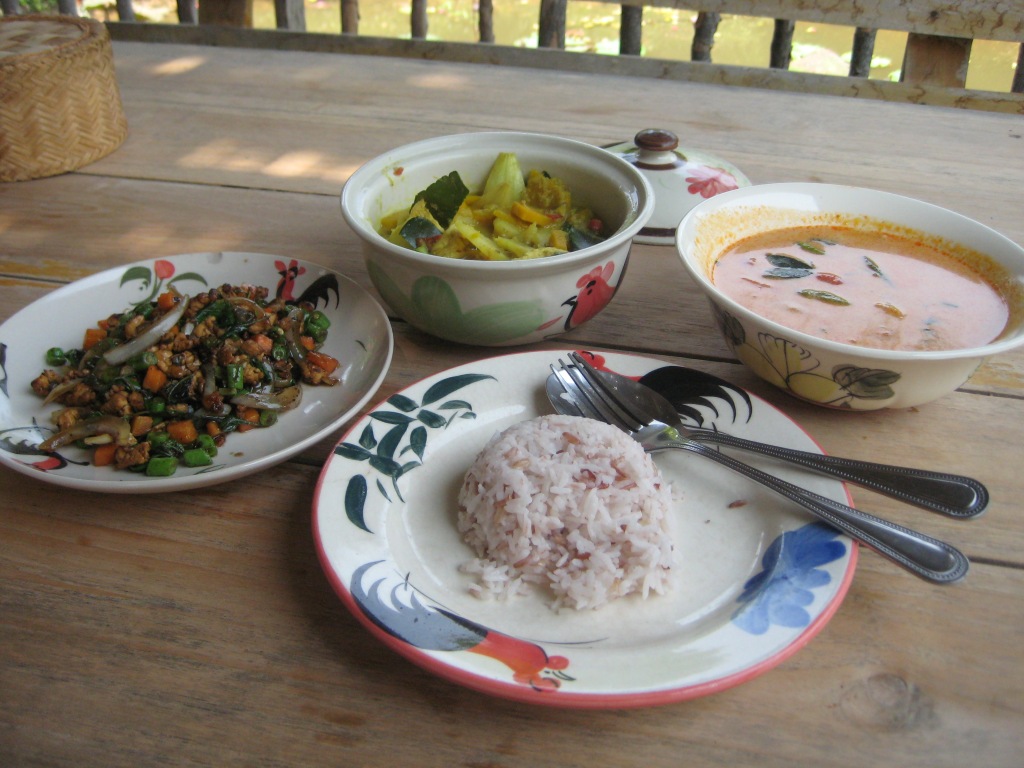










How fun is that cooking school!?? Love the pictures! I did not use chopsticks until age 23. True Story.
I still don’t eat with them. You should see me with sushi.